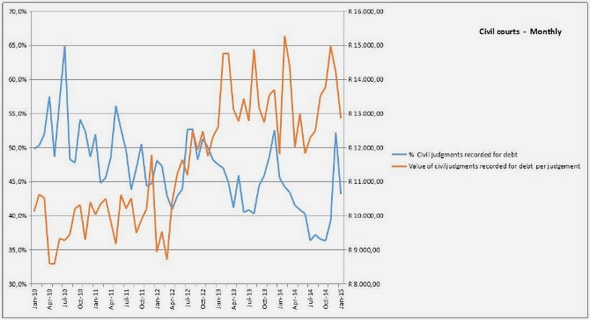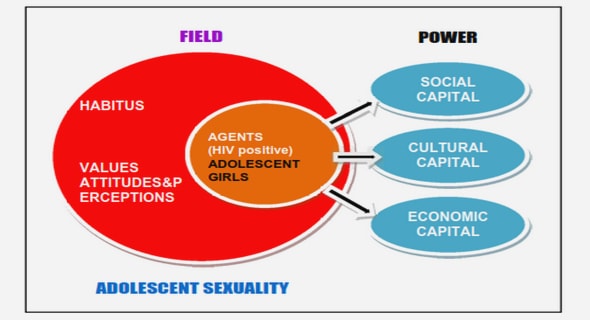Get Complete Project Material File(s) Now! »
Literature Review
Leaking underground storage tanks containing gasoline and other fuels have been a major source of groundwater contamination for many years. Since a single fuel spill can contain hundreds of hydrocarbon components, it is important to be able to determine which cause the greatest risk with respect to human health and the environment. These risks are based on the properties of the various hydrocarbons, and once they have been assessed, it is possible to select a remediation alternative for the contaminated site. There has been a movement towards the use of natural attenuation to clean up contaminated aquifers. Monitored natural attenuation is only used if it can be shown that it can effectively limit the travel distance and concentration of petroleum hydrocarbons in groundwater thus preventing them from reaching potential receptors. One way to determine the feasibility of natural attenuation as a remediation alternative is using contaminant transport modeling.
This literature review is divided up into two parts. Sections 2.1 through 2.3 comprise the first part, which begins by discussing the sources of hydrocarbon contamination and reviewing the properties of the compounds that pose the greatest risks. A broad discussion of natural attenuation follows with particular focus on its recent emergence as an approved means of meeting regulatory standards at hydrocarbon contaminated sites. Biodegradation of BTEX compounds is reviewed briefly in Section 2.2. The final part of the first section discusses previous contaminant transport modeling studies designed to simulate natural attenuation.
Section 2.4 makes up the second part of the literature review. This section reviews the background information about the Laurel Bay site used in this research. It summarizes the previous research performed on the site as well as the results of that research.
Hydrocarbon Contamination
Sources
Petroleum hydrocarbon contamination of shallow water table aquifers has been a significant environmental problem since the early 1980s (Chapelle, 1999). Petroleum filled LUST sites are one of the most common sources of contamination of these aquifers. It has been estimated that between 100,000 and 400,000 gasoline containing storage tanks are leaking into the soil or directly into the groundwater in the United States (Atlas and Cerniglia, 1995).
In 1989 and 1990, there were 90,000 confirmed releases from gasoline containing underground storage tanks (Borden et al., 1995). In 1993, it was reported that each year tens of millions of gallons of gasoline were released from storage tanks into the ground (Sulfita, 1993).
There were over 350,000 confirmed releases of petroleum products or leaking underground storage tanks in 1998 (Small, 1998). It can be seen from the above statistics that the problem involving leaking underground storage tanks has not improved over the last decade. Consequently, large volumes of potentially toxic compounds have been released into groundwater systems throughout the country. This is a major concern because UST sites are often located near heavily populated areas (Landmeyer et al., 1998), and the contamination of groundwater by these compounds represents the potential for serious public health problems.
Properties
Contamination caused by petroleum leaks and spills can be harmful to both human health and the environment. For this reason, risks along with remediation alternatives are often quickly investigated at contaminated sites. In order to properly assess the risk and design a remediation system, it is important to know the properties of the contaminants. A single commercial gasoline could have over two hundred hydrocarbon contaminants, and each of those contaminants can have a wide range of physical and chemical properties. The properties that are of highest importance include the solubility, the bioavailibility, the degradability, and the toxicity of the various components of the contaminant spill (Munoz and Irarrazaval, 1998).
In terms of petroleum contamination, the monoaromatics are the compounds of greatest concern. These include benzene, toluene, and three xylene isomers, m-, p-, and o-xylene. Monoaromatics make up a significant percent of gasoline, have high aqueous solubilities, and a high estimated toxicity. These compounds are also highly volatile, able to biodegrade, have low tendencies for adsorption, and a high mobility (Murarka et al., 1992).
Contaminants can range from being extremely soluble such as methyl-tertiary butyl ether, or MTBE, to being essentially insoluble such as the aliphatic components of a hydrocarbon spill. There is an order of magnitude difference between the most and least soluble BTEX compounds. The solubility of benzene is 1780 mg/L, of toluene is 515 mg/L, of ethylbenzene is 152 mg/L, of xylene is 198 mg/L (LaGrega et al., 1994), and of MTBE is 51,200 mg/L.
Both the solubility of a compound and its propensity to be absorbed to aquifer material have significant impacts on the potential of the contaminant to reach a point-of-contact (POC). A compound with a relatively high solubility and low adsorption potential, such as benzene, has the chance to quickly reach a downgradient receptor where it can impact both human health and the environment. On the other hand, compounds with higher solubilities and lower adsorption potential are also more bioavailable to the microbial populations in the subsurface, so there is more of an opportunity for contaminant mass loss.
It has been shown that the molecular structure of a compound is important when determining if that chemical can be biodegraded. Gasoline contains mostly low to moderate molecular weight compounds (Borden et al., 1995). These moderate to lower molecular weight hydrocarbons, including C10 to C24 alkanes and single-ring aromatics, appear to biodegrade most easily (Atlas, 1988). For aromatic compounds, it has been observed that biodegradability is enhanced by methyl substitutions on the benzene ring such as is seen in toluene and xylene (Gibson and Subramanian, 1984). Compounds that have many branches such as MTBE are more resistant to biodegradation than other compounds of similar size with fewer branches (Sulfita, 1993).
Certain compounds in gasoline have been found to be hazardous to human health. Benzene has been classified as a human carcinogen by the National Cancer Institute (Burmaster and Harris, 1982). Toluene, ethylbenzene, and xylene have all been classified by the EPA as Class D which indicates that is “not classifiable as to human carcinogenicity” (LaGrega, 1994). The Resource Conservation and Recovery Act of 1976 has classified both toluene and xylene as hazardous (Corapcioglu and Baehr, 1987). Since evidence exists supporting an association between benzene and cancer, it often drives the regulatory concern regarding hydrocarbon contaminated groundwater containing BTEX compounds (Chapelle, 1999).
Natural Attenuation
Experience has shown that all groundwater systems have the ability to limit contaminant migration to some degree (Chapelle, 1999). Processes including biodegradation, dispersion, dilution, volatilization and sorption are responsible for what has become known as natural attenuation (Small, 1998). Natural attenuation involves reducing the mass, mobility, or toxicity of contaminants in soils, sediments, or groundwater using the natural processes listed above.
In some instances, the natural processes occurring in the subsurface are often adequate avoiding the need for additional source removal or plume clean up activities (Clement et al., 1998). It has been shown that natural attenuation can effectively limit the travel distance and concentration of petroleum hydrocarbons in groundwater at many leaking underground storage tank sites (Rice et al., 1995). Natural attenuation has also been shown to result in contaminant dissipation rates similar to those produced using engineered remediation methods (Swett and Rapaport, 1998).
As of 1995, there were few well-documented demonstrations of natural attenuation at hydrocarbon contaminated sites (Borden et al., 1995). Recent studies have indicated that the natural attenuation should be considered as a remediation strategy at all petroleum hydrocarbon contaminated sites. This was a result of a leaking underground fuel tanks (LUFTs) study performed in California. The study suggested that leaking underground fuel tank, LUFT, plumes are generally no more than 250 meters in length and either stabilize or shrink over time (Rice et al., 1995). One of the final recommendations of the study was to “ut ilize passive bioremediation as a remediation alternative whenever possible”.
The U.S. EPA has given the name “monitored natural attenuation” (MNA) to the process of intentionally using natural processes to achieve remediation objectives. The goal of MNA is to achieve remediation objectives that are fully protective of human health and the environment (Swett and Rapaport, 1998). Natural attenuation as a remedial alternative is not a hands off approach. Before MNA can be used as a remediation alternative, sufficient site investigation and characterization must occur in order to establish a clean up objective as well as a time frame for clean up (Swett and Rapaport, 1998; and Small 1998). Once the monitored natural attenuation process has been implemented, it must be demonstrated that natural attenuation is in fact occurring and monitoring must be used to compare results with expectations (Chapelle, 1999; and Swett and Rapaport, 1998).
Using natural attenuation as a remediation method at petroleum hydrocarbon contaminated sites has led to changes in the clean up process of leaking underground storage tanks sites in many parts of the country (Small, 1998). Rather than using the previously established concentration based goals to assess if a site has been sufficiently cleaned up, performance based goals are being used. The clean up goals at a site are now being defined using plume containment or the achievement of a risk based concentration at some downgradient POC instead of achieving a specified concentration at every point at a site (Small, 1998).
Several advantages to MNA exist. Since it is an in situ process, it is relatively non-intrusive and there are low volumes of waste generated resulting in a lower risk for human exposure to the contaminated material. Another advantage of monitored natural attenuation is that the costs associated with it are low (Swett and Rapaport, 1998). If it can be shown that natural attenuation is working to remediate a contaminated site, more resources can be used to clean up an alternative site where natural attenuation is not feasible. The one major disadvantage to MNA is that the time to remediation is generally long and difficult to predict.
According to Chapelle (1999), intrinsic bioremediation is most effective when it is applied to plumes of BTEX compounds. Natural attenuation has been shown to remove BTEX compounds in shallow sandy aquifers (Lahvis et al., 1999). Barker et al. (1987) showed in a controlled experiment that naturally occurring degradation processes were able to remove benzene, toluene, and three xylene isomers from solution in around one year.
Before natural attenuation can be selected as a remedial solution, it is important to understand the “natural contaminant destruction potential” or “natural attenuation capacity” of the contaminated aquifer (Chapelle and Bradley, 1998; and Clement et al., 1998). Three factors that contribute heavily to an aquifer’s ability to naturally attenuate contamination are its hydrogeology, geochemistry, and microbiology. All three of these factors and their overall impact on the contamination can be investigated using a solute transport model (Chapelle, 1999). Modeling can also be used to obtain better estimates of the time to remediation (Swett and Rapaport, 1998).
BTEX Biodegradation
The major mechanism contributing to the natural attenuation of petroleum hydrocarbon contaminated sites is biodegradation (Baedecker et al., 1993). McAllister and Chiang (1994) reported that biodegradation by indigenous microbes appeared to be the mechanism most responsible for natural attenuation at many BTEX contaminated sites. Biodegradation has been described by Kennedy et al. (1998) as an important mechanism capable of destroying organic contaminants in the subsurface. Lahvis et al. (1999) found that aerobic biodegradation and volatilization near the water table contribute significantly to the natural attenuation of hydrocarbons at gasoline contaminated sites. Biodegradation is the only natural attenuation process that is able to transform the contaminants into harmless byproducts thus removing actual contaminant mass (Wiedemeier, et al., 1996).
Microbial populations indigenous to the sediments at contaminated sites have the ability to use multiple electron acceptors commonly found in the subsurface. These include oxygen (O2), nitrate (NO3–), ferric iron (Fe(III)), manganese (Mn+4), and sulfate (SO4-2) (Kennedy et al., 1998). When contamination is introduced to a groundwater system, a biodegradation order develops with the electron acceptors being preferentially selected in the following order: O2 > NO3– > Mn+4 > Fe(III) > SO4-2 > methanogenesis (Kennedy et al., 1998). This order is established by the microbes based on the amount of free energy that can be generated for each of the processes with aerobic biodegradation providing the largest amount of free energy (Kennedy et al., 1998). An electron acceptor further down in the sequence will only be utilized significantly if the higher energy electron acceptors have become depleted.
Microbes have been shown to biodegrade petroleum hydrocarbons in both aerobic and anaerobic environments (Davis et al., 1994). Due to the high amount of energy microbes receive from aerobic biodegradation, dissolved oxygen is the preferred electron acceptor at contaminated sites. Most petroleum hydrocarbons are biodegradable under aerobic conditions (Borden et al.,1995), and the biodegradation rates for the BTEX compounds are high in these conditions (Kao and Borden, 1997). For hydrocarbons subject to limited retardation, oxygen availability was found to be the dominant control on the persistence of the contaminants in the subsurface environment (Barker et al., 1987; and Borden et al., 1995).
The major disadvantage to aerobic biodegradation is the low availability of O2 in the contaminated groundwater. O2 is a dissolved gas and is limited to a maximum saturation of 8 to 9 mg/L (Ray, 1995). That, in combination with the fact that oxygen is rapidly consumed by microbes, can cause the conditions in contaminated aquifers to quickly become anaerobic resulting in the need for alternative forms of biodegradation. It has been shown that BTEX compounds can biodegrade anaerobically provided there are alternative electron acceptors present. BTEX biodegradation has been demonstrated to occur in nitrate reducing conditions (Hutchins et al., 1991; Kao and Borden, 1995) as well as in iron reducing conditions (Lovley et al., 1989). Biodegradation of BTEX has also been observed in sulfate reducing conditions (Edwards et al., 1991; and Haag et al., 1991) as well as in conditions supporting methanogenesis (Wilson et al., 1986; and Grbic-Galic and Vogel, 1987). It has been reported by many researchers that one of the BTEX compounds, benzene, is resistant to microbial biodegradation in anaerobic conditions (Acton and Barker, 1992; Barker et al., 1987; Hutchins et al., 1991; Weiner et al., 1998).
Abstract
Acknowledgements
1.0 Introduction
1.1 Background
1.2 Research Objectives
1.3 Approach
1.4 Site History
1.5 Thesis Organization
2.0 Literature Review
2.1 Hydrocarbon Contamination
2.2 BTEX Biodegradation
2.3 Modeling Studies
2.4 Laurel Bay Research
3.0 Numerical Models
3.1 Groundwater Model
3.2 Contaminant Transport Model
3.3 SEAM3D Model Calibration.
3.4 Model Verification
4.0 Results and Discussion
4.1 Error Analysis
4.2 Plume Transect
4.3 Areal Distributions
5.0 Data Interpretation
5.1 Contaminant Mass
5.2 Contaminant Mass Loss
5.3 Long Term Simulation
6.0 Conclusions
6.1 Summary of Findings
6.2 Future Research
References .
GET THE COMPLETE PROJECT
Sequential Electron Acceptor Model of Intrinsic Bioremediation at a BTEX Contaminated LUST Site in Laurel Bay, South Carolina


